
Drain Fly Removal in Redland, TX
Drain fly removal in Redland, TX from Spot On Pest Control, LLC. Integrated drain cleaning and enzyme treatments stop recurring pests—schedule service today.

Drain Fly Removal in Redland, TX
Drain fly infestations are a common, persistent nuisance in Redland, TX homes and businesses. These tiny, moth‑like flies breed in organic sludge inside drains, floor traps, septic lines, and other places with standing moisture. Left unchecked they multiply quickly, create ongoing sanitation problems, and can indicate larger plumbing or hygiene issues. This page explains what causes drain fly problems in Redland, how technicians locate breeding sources, the most effective treatment methods, and practical sanitation and maintenance steps to prevent recurrence.
Why drain flies are a Redland, TX problem
Redland’s warm, humid climate creates ideal conditions for drain flies year-round. High humidity speeds larval development and allows organic biofilm (the greasy, slimy buildup that drain flies feed on) to remain moist longer. Homes with older plumbing, slow drains, septic systems, or infrequent drain maintenance are especially vulnerable. Seasonal heavy rainfall can also overload outdoor drains and septic systems, increasing the chance of backflow into indoor traps where flies can colonize.

Common signs of a drain fly infestation
- Small, fuzzy, moth-like flies resting on walls, ceilings, or near drains — especially at night.
- Persistence of flies after typical household insect sprays.
- Musty odor or noticeable sludge in sink or shower drains.
- Increased fly activity around bathrooms, laundry rooms, floor drains, and basement sumps.
- Larvae or visible organic buildup when P-traps are removed or when drains are inspected.
Typical breeding sources technicians look for
Technicians trained in drain fly removal will systematically inspect likely breeding sites rather than treating only visible adult flies. Common sources include:
- Kitchen sink and floor drains with organic film and grease buildup.
- Bathroom drains, shower pans, and tub overflow areas where soap scum accumulates.
- Floor drains in laundry rooms, basements, garages, and commercial kitchens.
- Septic tanks, leach fields, or damaged sewer lines where organic waste and moisture congregate.
- Clogged or rarely used drains that remain moist and undisturbed.
How technicians diagnose the source
A professional diagnosis focuses on finding where eggs and larvae are producing new adults. Standard steps include:
- Visual inspection of all interior and outdoor drains and plumbing fixtures.
- “Landing” or tape tests near drains to confirm adult activity patterns and match them to specific drains.
- Removal and inspection of P-traps and drain covers to check for sludge and larvae.
- Using a small camera or borescope in long runs, floor drains, and sewer lines when the source is not obvious.
- Simple biological swabs or moisture checks to evaluate the presence and thickness of organic biofilm.
Combining these steps ensures the treatment targets the breeding location rather than only killing adults.
Treatment methods used in Redland homes
Effective drain fly removal uses an integrated approach that eliminates breeding material and interrupts the life cycle. Common, proven treatment steps include:
Mechanical drain cleaning
- High-pressure flushing, auguring, or manual removal of organic buildup from traps and drain lines.
- Scraping or brushing visible biofilm from accessible pipes and drain surfaces.
- Mechanical removal is critical because biofilm protects larvae from surface treatments.
Enzyme and bacterial treatments
- Use of biological enzyme formulations that break down grease, soap, and organic slime inside pipes.
- These products digest the food source so larvae can no longer survive. Enzymes are low-odor and safe for most plumbing and septic systems when used as directed.
Targeted insecticides and larvicides
- When necessary, technicians apply EPA-labeled insect growth regulators or larvicides that specifically interrupt fly development.
- Spot treatments to drain rims and immediate areas reduce adult populations during treatment cycles. These are applied conservatively and targeted to avoid unnecessary chemical exposure.
Secondary measures
- Vacuuming or localized fogging in severe cases where a large adult population is present inside the structure.
- Inspection and repair of damaged sewer pipes or failed seals that reintroduce organic material into indoor drains.
- The most reliable results use all applicable methods: physical removal of biofilm, followed by enzyme treatments and targeted larvicides when appropriate.
Expected timeline and follow-up recommendations
Drain flies have a rapid lifecycle; eggs hatch into larvae in a few days and can become adults within 7 to 14 days. Because of this, users should expect:
- Noticeable drop in adult fly numbers within 48 to 72 hours after treatment when mechanical cleaning and larvicides are used.
- More complete elimination of the population over 7 to 14 days as remaining larvae fail to develop in cleaned, enzyme-treated drains.
- A recommended follow-up inspection about 7 to 14 days after initial service to verify eradication and re-treat any missed breeding spots. A second follow-up at 30 days is often advised for persistent or complex infestations, especially where septic systems or deep sewer lines are involved.
Technicians typically advise monitoring for at least one full fly lifecycle (2 weeks) before declaring the infestation resolved.
Sanitation and maintenance to prevent recurrence
Preventing drain flies in Redland homes depends on reducing organic buildup and moisture. Recommended maintenance steps:
- Monthly enzyme-based drain treatments in sinks, tubs, and floor drains to break down forming biofilm.
- Regular mechanical cleaning for drains that handle grease or heavy organic loads (kitchen sinks, garbage disposals).
- Run hot water for 30 seconds after each heavy use and flush drains weekly with boiling water where safe for plumbing.
- Avoid pouring fats, oils, and coffee grounds down kitchen drains. Collect grease and dispose with other waste.
- Keep rarely used drains flowing by running water through them weekly or installing trap primers to maintain a water seal in floor drains.
- Repair leaking pipes, fixture seals, or faulty venting that can create damp conditions favorable to flies.
- For homes with septic systems: schedule routine pumping and inspect for signs of failure, especially after heavy rainfall seasons.
Why professional removal matters
Home remedies may reduce visible adults temporarily but often fail to remove the underlying biofilm or reach larvae inside pipes. Professional technicians combine mechanical cleaning, enzyme-based source reduction, and targeted treatments to achieve lasting control. In Redland, where humidity and climate favor rapid re-colonization, an integrated, evidence-based approach and scheduled maintenance are the reliable way to keep drain flies from returning.
Conclusion
Drain fly removal in Redland, TX requires accurate diagnosis of breeding sites, thorough removal of organic sources, and a combination of biological and targeted treatments. With proper follow-up and ongoing sanitation measures tailored to Redland’s humid environment, households and businesses can expect predictable timelines for control and a significantly reduced risk of recurrence.
Drain Fly Removal in Redland, TX That Targets Hidden Breeding Zones
Drain flies can be a recurring nuisance if not addressed correctly. Our professional drain fly removal in Redland, TX focuses on source elimination and sanitation for long-lasting results. Spot On Pest Control, LLC includes this service in maintenance plans to prevent future outbreaks. Schedule your service today.
Clear Your Drains Of Flies With Deep, Lasting Treatment
Our Services
Our pest control services cover ants, termites, bed bugs, rodents, mosquitoes, and other common pests, with customized solutions for both residential and commercial properties.
.png)






